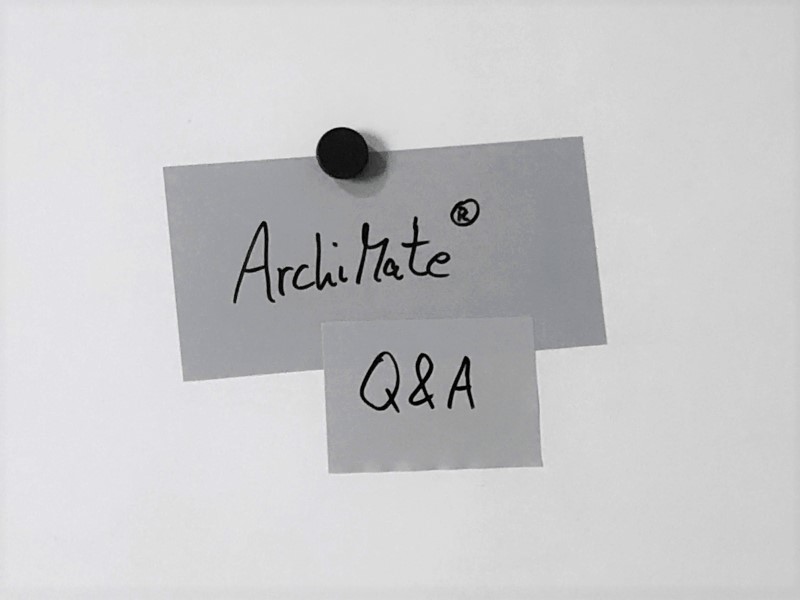The ArchiMate® modeling language has become increasingly adopted by architecture practitioners in recent years. Still, there are some questions related to the use of ArchiMate® that we see being raised on a regular basis and we would thus like to address in this blog post.
Why should I use ArchiMate®?
ArchiMate® allows for a uniform representation across different layers and aspects of the enterprise architecture (see our ArchiMate® poster). That way you will be able to map interrelationships across the entire architecture and, e.g., drill down from strategy to execution using one and the same language. This in turn facilitates communication, planning, and decision making about architectural matters.
Is ArchiMate® limited to modeling at the enterprise level?
No, it isn’t, you may well use ArchiMate® to model at the solution level, too. We’ve seen several solution architecture documents, application documents, etc. in the past that made proper use of ArchiMate®. At some point of your mapping efforts you may need to switch to other languages though. This is to take advantage of their richness in particular domains.
How does ArchiMate® compare and relate to other modeling languages?
ArchiMate® does not make other modeling languages like BPMNTM (Business Process Model and Notation) and UML® (Unified Modeling Language) obsolete. These languages may well complement each other. While ArchiMate® as the umbrella language may be used to model the architecture across different layers and domains, other languages that provide a larger variety of concepts in certain areas are likely to come into play once there is a need to model details within particular architecture domains. To be able to navigate from higher-level to lower-level perspectives, it will then be necessary to map the different language concepts onto one another.
To what extent is ArchiMate® suited for business architecture modeling?
Based on the motivation, strategy, and business layer concepts it offers, ArchiMate® supports the creation and visual representation of business architecture blueprints as per the BIZBOK® Guide (A Guide to the Business Architecture Body of Knowledge®). It can also be leveraged to depict a large number of concepts put forward by our Business Architecture Triangle.
Do I have to use the whole language?
No, it’s like with a natural language – there is a lot of grammar and vocabulary that we do not necessarily use regularly. This is the case, in particular, when we learn a new foreign language. Our experience shows that you are well advised to initially focus on a subset of the language, with which you will be able to address the primary concerns at that point in time.
Is ArchiMate® supposed to be used by architects only?
No, if that was the case, it would not offer more than limited help in communicating with one another – and that’s key to whatever sort of language. It is crucial to get the language being used for stakeholder communication. The fundamental question then is not whether but how much ArchiMate® we should make use of. This in turn depends on the specific audience at hand. In general, we should limit the number of concepts, particularly relationships (which may also be expressed by means of nesting or other ways of graphical arrangements, such as matrix-like ones).
Can ArchiMate® be used with other methods and frameworks?
Yes, it may well be used with TOGAF® (The Open Group Architecture Framework) to provide for a uniform representation of building blocks within different kinds of artifacts. In addition, it has proven to be useful for creating views that architecture documents based on the arc42 template typically come with. Another example is domain-driven design, where ArchiMate® may be used to facilitate the identification and mapping of bounded contexts and their dependencies.
Please get in touch if you want to learn more about ArchiMate® (e.g., in our training courses) or discuss how we may help you to use the language effectively.


